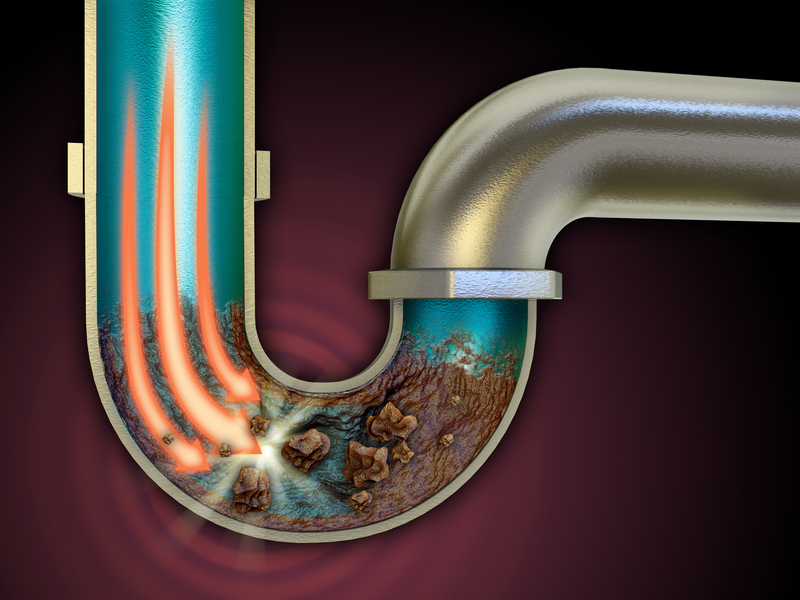Effortless Steps for Oven Cleaning Like a Pro
Posted on 06/11/2025
Effortless Steps for Oven Cleaning Like a Pro
When was the last time you gave your oven a thorough clean? Regular oven cleaning is vital for both hygiene and maintaining the efficiency of your appliance. Grease, food splatters, and burnt-on residues can accumulate over time, leading to unpleasant scents, smoke, and even altered flavors in your cooking. While it may seem like a daunting task, learning how to clean your oven like a pro can actually be an effortless and rewarding process. This comprehensive guide will walk you through professional oven cleaning techniques, making the job easy, safe, and highly effective.
Why Oven Cleaning Matters: The Hidden Benefits
- Enhanced food taste and aroma: Remove burnt residues to keep your dishes tasting their best.
- Safety: Prevent smoke and fire hazards inside your oven caused by grease and food build-up.
- Energy efficiency: A clean oven heats up faster and uses less energy.
- Hygiene: Eliminate bacteria and pests attracted to food debris.
- Prolongs appliance lifespan: Regular oven maintenance reduces mechanical strain.
A sparkling clean oven isn't just aesthetically pleasing--it's essential for a healthy and happy kitchen!

The Right Time & Frequency to Clean Your Oven
How often should you be cleaning your oven? It can vary depending on usage, but a good rule of thumb is:
- Light use (once a week): Clean every 4-6 months.
- Moderate use (3+ times a week): Clean every 2-3 months.
- Heavy use (daily or more): Clean monthly or as needed.
Don't forget occasional spot cleaning of visible messes after cooking to extend the period between deep cleans.
Effortless Steps for Oven Cleaning Like a Pro
Ready to transform your dirty oven into a spotless, efficient appliance? Follow these professional oven cleaning steps for fuss-free, sparkling results.
1. Prep the Oven and the Area
- Turn off and cool down: Make sure your oven is completely off and cool before starting.
- Lay old towels or newspapers: Protect the floor and surrounding area from drips or spills.
- Wear gloves: Use rubber gloves to protect your hands from both grime and cleaning agents.
2. Remove Oven Racks, Trays, and Accessories
Gently slide out all racks, trays, and removable accessories. Place them in the sink, tub, or a large plastic bin for separate cleaning.
3. Choose the Right Oven Cleaner
- Commercial Oven Cleaners: Highly effective for tough jobs but use with adequate ventilation.
- DIY Solutions: Use items you have at home for an affordable and eco-friendly clean.
Pro Tip: Avoid harsh chemicals if you have pets, children, or sensitive skin. Instead, opt for natural cleaners like baking soda and vinegar for safe oven cleaning.
4. Cleaning Oven Racks & Trays
Place the racks and trays in a bathtub or a large container. Next, try this oven rack cleaning method used by pros:
- Fill with hot water and mix in a few tablespoons of dish soap or non-toxic degreaser.
- Add half a cup of baking soda for extra stain-lifting power.
- Let them soak for at least two hours or overnight for stubborn grease.
- Scrub with a non-abrasive pad or brush, then rinse and dry thoroughly.
For racks that don't come clean easily, try placing them in a sealed plastic bag with a cup of ammonia for several hours--do this outside for safety!
5. Apply the Oven Cleaner
Here is an easy oven cleaning technique with natural ingredients:
- Make a Cleaning Paste: Mix 1/2 cup baking soda with enough water to form a thick, spreadable paste.
- Spread Paste: Apply the paste over all interior surfaces, avoiding heating elements. Focus on greasy, burnt, or stained areas.
- Let Sit: Allow the paste to work for 8-10 hours or overnight. For a deeper clean, especially on tough spots, leave it for longer.
Alternative: For really stubborn stains, use a specific oven cleaning spray--but always follow the manufacturer's instructions.
6. Wipe Away Residue
After the paste has had time to break down grease and grime, use a damp cloth or sponge to wipe down all surfaces. You may need to rinse several times with clean water for a residue-free finish.
7. Tackle the Oven Door
Oven doors tend to accumulate a greasy layer and streaks. For cleaning oven glass like a professional:
- Make a paste with baking soda and water, spread it on the glass, and let it sit for 20-30 minutes.
- Wipe with a clean, damp microfiber cloth.
- Use a razor blade at a shallow angle to gently scrape away stubborn spots--never use harsh abrasives.
If your oven has a removable glass panel, consult the manual for instructions on safe removal and cleaning.
8. Deodorize With Vinegar
To banish lingering odors:
- Pour one cup of white vinegar into a baking dish and place it in the oven.
- Set the oven to low (around 120-150?C or 250-300?F) for 15-20 minutes.
- Let the oven cool, then wipe down all surfaces again.
This simple step leaves your oven smelling neutral and fresh.
9. Clean Oven Knobs, Handles, and Exterior
Don't forget the outside! Wipe down the oven's control panel, knobs, handles, and exterior door with a gentle, non-abrasive cleaner. Dry thoroughly for a streak-free shine.
10. Replace Racks and Finish Up
Once everything is sparkling and dry, replace all racks and trays. Step back and admire your oven's transformation--safe, clean, and ready to cook like new!
Pro Tips for Hassle-Free Oven Cleaning
- Use oven liners: Non-stick or disposable liners on the bottom catch drips and crumbs for easy removal.
- Wipe spills immediately: Quickly cleaning up after cooking prevents baked-on messes.
- Frequent maintenance: Light, regular cleaning is far easier than occasional deep cleans!
- Automatic cleaning cycles: If your oven features a self-cleaning mode, use it regularly according to the manufacturer's instructions--always wipe away ash afterward.
- Don't forget air vents: Dust and wipe air vents for optimal performance.
Natural Oven Cleaning Solutions That Really Work
Eco-friendly oven cleaning is not only gentle on your appliance but also safe for the environment and your health. Here are some tried-and-true options:
- Baking Soda and Water Paste: Classic, non-toxic, and effective for breaking down grease and food residues.
- White Vinegar: Helps dissolve mineral deposits, neutralizes odors, and loosens stubborn grime.
- Lemon Juice: The acid in lemon works wonders for lifting stains and leaves a pleasant aroma. Mix with salt for a gritty scrub.
- Castile Soap: Plant-based soap is ideal for wiping the oven's exterior and gentle interior cleaning.
Tip: Always check your oven's manual before using any cleaning solution, and never mix commercial chemical cleaners with natural products.
Common Oven Cleaning Mistakes to Avoid
Cleaning your oven like a pro also means knowing what not to do. Watch out for these frequent errors:
- Using abrasive pads or steel wool: These can scratch and ruin enamel interiors or oven glass.
- Leaving residues behind: Failing to rinse properly may leave behind cleaning agents that produce fumes when heated.
- Spraying electrical parts: Avoid getting any moisture or cleaner on oven fans, lights, or control panels.
- Skipping spot cleaning: Allowing spills to harden makes future cleaning much harder.
Frequently Asked Questions About Oven Cleaning
Can I use my oven right after cleaning?
Always ensure your oven is completely dry and free of any lingering cleaners or moisture before use. If you used a commercial oven cleaner, run the oven empty at a high temperature for 15-30 minutes to burn off any residues before cooking food.
Is the self-cleaning cycle enough?
Self-cleaning ovens get extremely hot to incinerate grime, turning it into ash you wipe away after. While convenient, they may not remove everything, and stubborn spots or glass panels still need manual attention. Always ventilate your kitchen well during a self-clean cycle.
Can all ovens be cleaned the same way?
No--some ovens (especially self-clean or pyrolytic models) have special enamel coatings that should not be scraped or exposed to harsh chemicals. Always check your oven's user manual for specific recommendations.
What if my oven still smells after cleaning?
Persistent odors may be due to hidden grime, especially between glass panels or beneath elements. Repeat deodorizing with vinegar or lemon. If odors remain, consult a professional to check for hidden issues.

Maintaining Your Oven: Preventing Future Buildup
Once your oven is sparkling clean, keep it that way with these simple habits:
- Deep clean regularly: Don't wait until your oven becomes unmanageable--stick to a set schedule.
- Use oven-safe containers: Cover food that might splatter or bubble over while roasting or baking.
- Check for spills: After every use, briefly peek inside and wipe up small drips before they harden.
- Oven liners: Install and replace non-stick oven liners as needed for easy crumb collection.
- Fresh air: Regularly open the oven door after cooling to let lingering steam or smells dissipate.
With these habits, you'll effortlessly maintain a clean oven and enjoy safer, tastier meals year-round.
Conclusion: Effortless Oven Cleaning for a Spotless Kitchen
Mastering oven cleaning like a pro doesn't require fancy tools or expensive chemicals. By using these effortless, step-by-step methods and making oven maintenance a regular habit, you'll ensure your appliance works flawlessly while keeping your kitchen safe and inviting. Whether you prefer eco-friendly DIY solutions or specialized products, the secret lies in consistency and proper technique. So roll up your sleeves, follow these oven cleaning tips, and enjoy the shining results with minimal effort every time you cook!
Ready to give your oven a makeover?
Bookmark this guide on effortless oven cleaning methods and refer back whenever your oven needs some professional TLC. A clean oven is the foundation of every happy kitchen.




